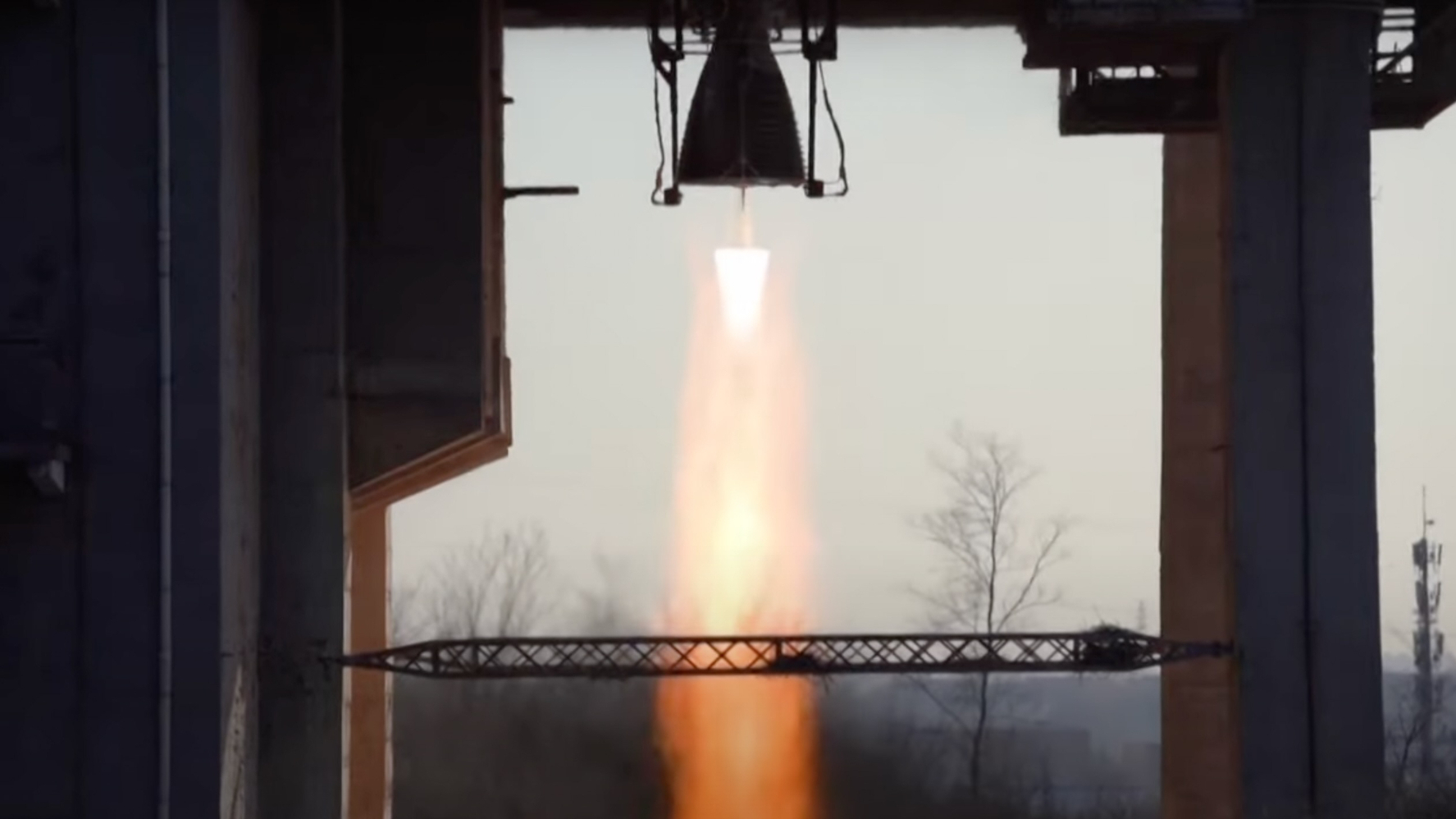Watch China test-fire engine for new crewed moon rocket (video)
The new engine is required to get astronauts to the moon later this decade.
China has test-fired a new engine for a planned rocket designed to take astronauts to the moon.
The liquid hydrogen-liquid oxygen engine, sometimes referred to as the YF-75E, was tested by the Sixth Academy of China Aerospace Science and Technology Corporation (CASC), the country's state-owned space contractor.
The test was conducted at a vertical high-altitude simulation test stand. The engine will power the third stage of the huge, in-development Long March 10 rocket and will thus operate above Earth's atmosphere.
CASC did not disclose the duration of the test, but stated that it "verified the feasibility of long-range operation" of the engine. The successful test is another step on the road to China putting its astronauts on the moon.
According to China's plan, a pair of roughly 295-foot-tall (90 meters) Long March 10 rockets using three core stages each will separately launch the crew spacecraft and the lunar landing stack.
Related: China's Long March rocket family: History and photos
The two sets of spacecraft will then rendezvous and dock in lunar orbit. This will allow two out of a crew of three astronauts to enter the "Mengzhou" lunar lander and descend to the lunar surface. China aims to put its first astronauts on the moon before 2030.
Breaking space news, the latest updates on rocket launches, skywatching events and more!
A low Earth orbit variant of the Long March 10, using a single core stage, could fly as soon as 2027. China conducted a key test of the YF-100K engines for the Long March 10 rocket's first stage last year.

Andrew is a freelance space journalist with a focus on reporting on China's rapidly growing space sector. He began writing for Space.com in 2019 and writes for SpaceNews, IEEE Spectrum, National Geographic, Sky & Telescope, New Scientist and others. Andrew first caught the space bug when, as a youngster, he saw Voyager images of other worlds in our solar system for the first time. Away from space, Andrew enjoys trail running in the forests of Finland. You can follow him on Twitter @AJ_FI.

